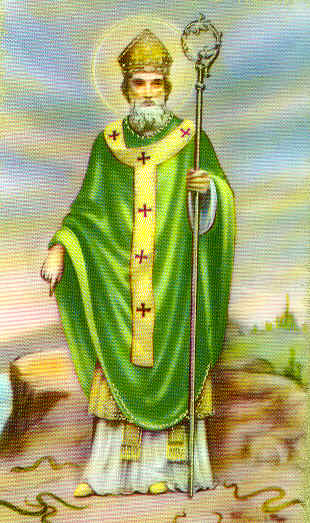
That’s right. Patrick was a wee lad by the name of Succat living in Scotland when he was kidnapped by Irish pirates at the age of 16 [“Kidnapped by pirates is good!” – Fred Savage, The Princess Bride] and sold as a slave.
In Ireland he herded a Celtic chieftain’s sheep for six years, until one day he ran away and traveled 200 miles across Ireland to escaped to France on a ship.
In France, he studied under the Bishop Germanus at the Auxerre monastery in Gaul. Patrick returned to Britain a priest, but heard the land of his captivity calling, and returned to Ireland in 430 A.D.

Patrick’s experience living in Eire gave him an advantage over previous missionaries.
During the Druidic festival of Beltraine, which celebrated the coming of spring, the King Laoghaire lit the annual bonfires. The law of the land said no other fires could be lit that night under penalty of death. Patrick defied the law by lighting a flame in clear view of the capital, to remember the resurrection we know as Easter.
Patrick was ordered before the King to explain himself. Legend says this was the first of many times Patrick picked up three-leaf clover and used it to illustrate the Holy Trinity. The number 3 was particularly revered by the Gaelic people, so Patrick often emphasized the Trinity in his teachings. King Laoghaire was surprisingly receptive to Patrick, the former slave, and later asked him to codify Irish law.

Saint Patrick feat is remarkable in that he converted an entire people to Christianity without bloodshed. He didn’t have to die a martyr’s death for his beliefs, nor did he execute or threaten to execute anyone who did not share them.
But his most famous conquest was as the “Samuel L. Jackson” of the Emerald Isle. According to legend, Saint Patrick cured the Irish plains of their snake infestation. And to this day there are no snakes in Ireland, iron-clad proof of the great Saint’s miracle!
“I have had it with these @#$%&! snakes on these @#$%&! Irish plains!“
Saint Patrick, Snakes on a Plain, 433 A.D.
